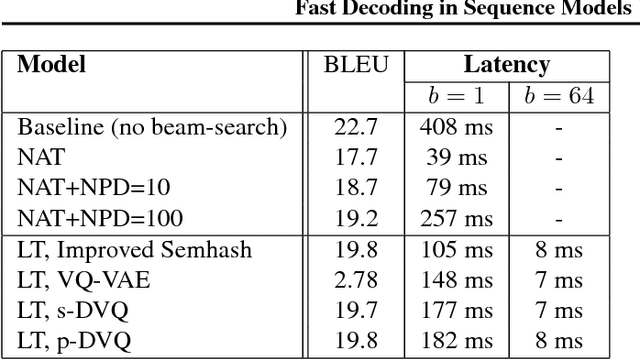Fast Decoding in Sequence Models using Discrete Latent Variables
Paper and Code
Jun 07, 2018



Autoregressive sequence models based on deep neural networks, such as RNNs, Wavenet and the Transformer attain state-of-the-art results on many tasks. However, they are difficult to parallelize and are thus slow at processing long sequences. RNNs lack parallelism both during training and decoding, while architectures like WaveNet and Transformer are much more parallelizable during training, yet still operate sequentially during decoding. Inspired by [arxiv:1711.00937], we present a method to extend sequence models using discrete latent variables that makes decoding much more parallelizable. We first auto-encode the target sequence into a shorter sequence of discrete latent variables, which at inference time is generated autoregressively, and finally decode the output sequence from this shorter latent sequence in parallel. To this end, we introduce a novel method for constructing a sequence of discrete latent variables and compare it with previously introduced methods. Finally, we evaluate our model end-to-end on the task of neural machine translation, where it is an order of magnitude faster at decoding than comparable autoregressive models. While lower in BLEU than purely autoregressive models, our model achieves higher scores than previously proposed non-autoregressive translation models.
 Add to Chrome
Add to Chrome Add to Firefox
Add to Firefox Add to Edge
Add to Edge